Proper care for alpaca wool involves hand washing with a mild detergent in lukewarm water to preserve its softness and delicate fibers. Avoiding heat and agitation prevents felting. Air drying is essential to maintain shape and quality. This guide provides essential tips for washing, drying, and storing alpaca wool garments to ensure longevity and maintain their luxurious feel.
Understanding Alpaca Wool Fibers
Alpaca wool is a natural, luxurious fiber known for its softness, lightweight feel, and excellent thermal properties. Unlike sheep’s wool, it contains no lanolin, making it hypoallergenic and ideal for sensitive skin. The fibers have a unique crimp that enhances insulation and durability. Available in a range of natural colors, alpaca wool is highly prized for its versatility and ability to retain warmth without feeling heavy. Its smooth texture resists pilling and ensures a soft, comfortable wear, making it perfect for high-quality garments.
Key Considerations Before Washing
Always check the care label, use lukewarm water, and select a mild detergent to protect the fibers. Avoid harsh chemicals and extreme temperatures to prevent damage.
Checking the Care Label
Always review the care label on your alpaca wool garment for specific washing instructions. Most labels recommend hand washing or machine washing on a delicate cycle with cold water. Use a mild detergent designed for wool or delicate fibers, avoiding harsh chemicals or enzymes that can damage the fibers. Ignoring the care label may lead to felting, shrinkage, or loss of softness. If no label is present, default to gentle hand washing in lukewarm water to preserve the fabric’s integrity and natural texture.
Importance of Water Temperature
Water temperature is critical when washing alpaca wool. Use lukewarm water (around 10-20°C) to prevent felting, shrinking, or altering the fabric’s texture. Avoid hot water, as it can cause fibers to felt and lose their softness. Cold water may not effectively clean the garment, while hot water risks damaging the delicate fibers. Consistent temperatures ensure the wool remains intact and retains its natural properties. Always check the care label for specific temperature recommendations to maintain the quality and longevity of your alpaca wool garment.
Choosing the Right Detergent
Using the right detergent is crucial for preserving alpaca wool. Opt for a mild, pH-neutral detergent specifically designed for wool or delicate fabrics. Avoid harsh chemicals, bleach, or fabric softeners, as they can damage fibers or strip natural oils. Wool-specific detergents are ideal, as they gently clean without causing felting or softness loss. Always check the label for enzyme-free formulations, as enzymes can break down protein-based fibers like wool. Using a small amount of detergent helps prevent residue buildup, ensuring the wool remains soft and intact. This step is vital for maintaining the quality and longevity of your alpaca wool garments.
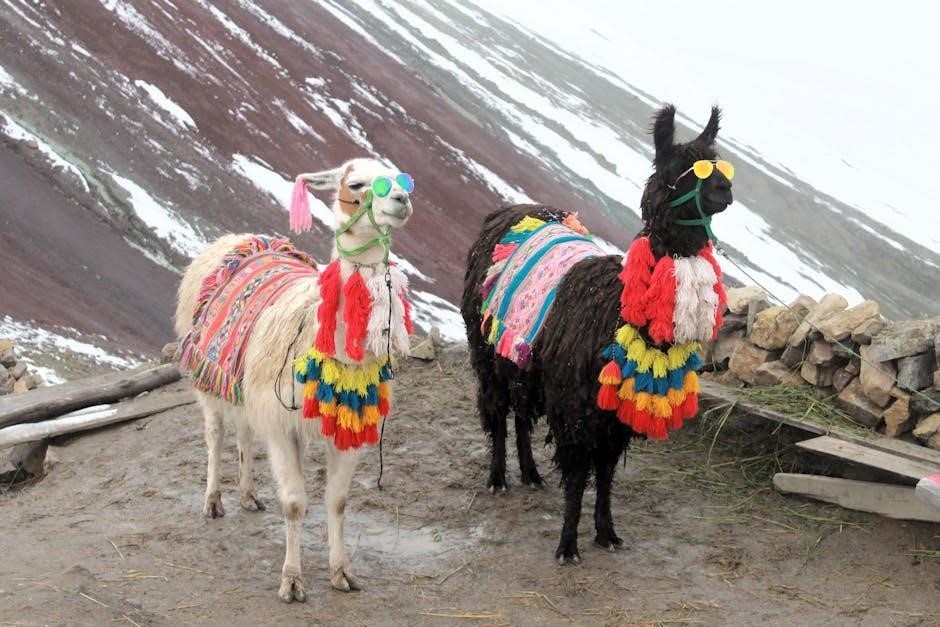
Hand Washing Alpaca Wool
Fill a basin with lukewarm water and add a gentle, pH-neutral detergent. Submerge the garment, agitate gently, and avoid wringing or twisting. Reshape before air drying to maintain form.
Preparing for Hand Wash
Before hand washing, turn the garment inside out and place it in a mesh laundry bag to protect it from snags. Check for stains and pre-treat if necessary. Use a mild, pH-neutral detergent specifically designed for wool or delicate fibers. Avoid regular detergents or those containing enzymes, as they can damage the fibers. Fill a basin with lukewarm water (around 85°F) and gently dissolve the detergent. Ensure the water is not too hot or cold, as extreme temperatures can cause felting or shrinkage. Submerge the garment carefully, avoiding agitation or twisting.
Step-by-Step Hand Washing Process
Gently submerge the garment in the prepared lukewarm water, ensuring it is fully covered. Allow it to soak for about 15 minutes. Use your hands to gently press the water through the fibers, working from the top down. Avoid rubbing or agitating the fabric, as this can cause felting. Rinse thoroughly under lukewarm running water until no soap residue remains. Drain excess water without wringing or twisting the garment. Lay it flat on a clean towel to reshape and air dry, ensuring even airflow and avoiding direct sunlight or heat.
Gently Drying After Hand Wash
After rinsing, gently squeeze out excess water without wringing or twisting. Lay the garment flat on a clean, dry towel, reshaping it to its original dimensions. Avoid hanging or exposing it to direct sunlight or heat, as this can cause stretching or shrinkage. Permit the garment to air dry in a cool, well-ventilated area. Do not use a dryer or iron, as heat can damage the fibers. This method preserves the texture, softness, and natural drape of the alpaca wool, ensuring long-lasting quality and comfort.
Machine Washing Alpaca Wool
Use a gentle cycle with cold water and place the garment in a mesh laundry bag to protect it from snagging. Avoid agitating or wringing the fabric.
Machine Wash Settings and Cycles
For machine washing alpaca wool, use a gentle or delicate cycle with cold water (below 30°C); Select a wool-specific or hand-wash setting to minimize agitation. Place the garment in a mesh laundry bag to protect it from snagging. Use a small amount of pH-neutral or wool-safe detergent, avoiding harsh chemicals or bleach. Avoid hot water, as it can cause shrinking or felting. Gently remove excess water without wringing, and reshape the garment before air-drying. This method ensures the fibers remain soft and intact, preserving the quality of your alpaca wool item.
Using a Mesh Laundry Bag
Placing your alpaca wool garment in a mesh laundry bag during machine washing protects it from snagging and friction. This prevents pilling and damage caused by the washing machine’s drum. The bag allows gentle water flow while keeping the fabric secure. It is especially recommended for delicate or loosely woven items. Always use a bag with small mesh holes to ensure optimal protection. This simple step significantly extends the lifespan of your alpaca wool clothing, maintaining its softness and texture through repeated washing cycles.
Drying Techniques for Alpaca Wool
Always lay alpaca wool garments flat to air dry, reshaping them to their original dimensions. Avoid direct heat, as it can cause shrinkage or damage to the fibers.
Reshaping and Flat Drying
After washing, gently remove excess water without wringing or twisting. Lay the garment flat on a clean towel, reshaping it to its original dimensions. Smooth out wrinkles with your hands to restore the fabric’s natural form. Allow the garment to air dry completely in a cool, well-ventilated area, away from direct sunlight or heat sources. Hanging or exposing to direct heat can cause stretching or shrinkage. Ensure the garment is fully dry before storing to prevent moisture buildup, which can lead to odor or damage over time.
Why Avoiding Direct Heat is Crucial
Direct heat can cause alpaca wool fibers to shrink, felt, or lose their softness. Heat exposure may also alter the natural texture and cause irreversible damage. To preserve the integrity of alpaca wool, avoid using dryers or irons, as high temperatures can weaken the fibers. Always air dry alpaca garments in a cool, shaded area, away from direct sunlight, which can also cause fading or discoloration. Properly managing heat ensures the fabric remains soft, durable, and maintains its luxurious quality over time.
Removing Stains from Alpaca Wool
Act quickly to address stains on alpaca wool to prevent them from setting. Gently blot the area with a clean cloth to absorb excess moisture without rubbing, which can damage fibers. For stubborn stains, mix a mild detergent with cool water, apply it to the stain, and blot softly. Avoid using harsh chemicals or heat, as they can harm the wool. Rinse with cool water and allow the garment to air dry. Prompt attention and gentle care ensure stains are removed effectively while preserving the wool’s softness and integrity.
Acting Quickly on Stains
Addressing stains on alpaca wool promptly is crucial to prevent them from setting. Gently blot the stained area with a clean cloth to absorb excess moisture. Avoid rubbing, as it can damage fibers. For stubborn stains, mix a mild detergent with cool water, apply it to the stain, and blot softly. Do not use harsh chemicals or heat, as they can harm the wool. Rinse with cool water and allow the garment to air dry. Prompt attention and gentle care ensure stains are removed effectively while preserving the wool’s softness and integrity.
Blotting vs. Rubbing Stains
When addressing stains on alpaca wool, blotting is always preferable over rubbing. Blotting gently absorbs the stain without damaging the fibers, while rubbing can cause friction, leading to felting or distortion. Use a clean cloth to lightly press and soak up the stain, working from the outside in. Avoid applying pressure or scrubbing, as this can weaken the fabric and create permanent damage. Blotting preserves the softness and integrity of the wool, ensuring the garment remains in optimal condition.
Using Gentle Cleaning Solutions
For alpaca wool, use a mild detergent or baby shampoo mixed with cool water to create a gentle cleaning solution. Avoid harsh chemicals or enzymes that can damage the fibers. Gently blot the stained area with a clean cloth dipped in the solution, working from the outside in. Rinse thoroughly with cool water to remove any soap residue. This method ensures the wool remains soft and undamaged. Always opt for pH-neutral detergents specifically designed for wool or delicate fabrics to protect the natural properties of alpaca fibers.
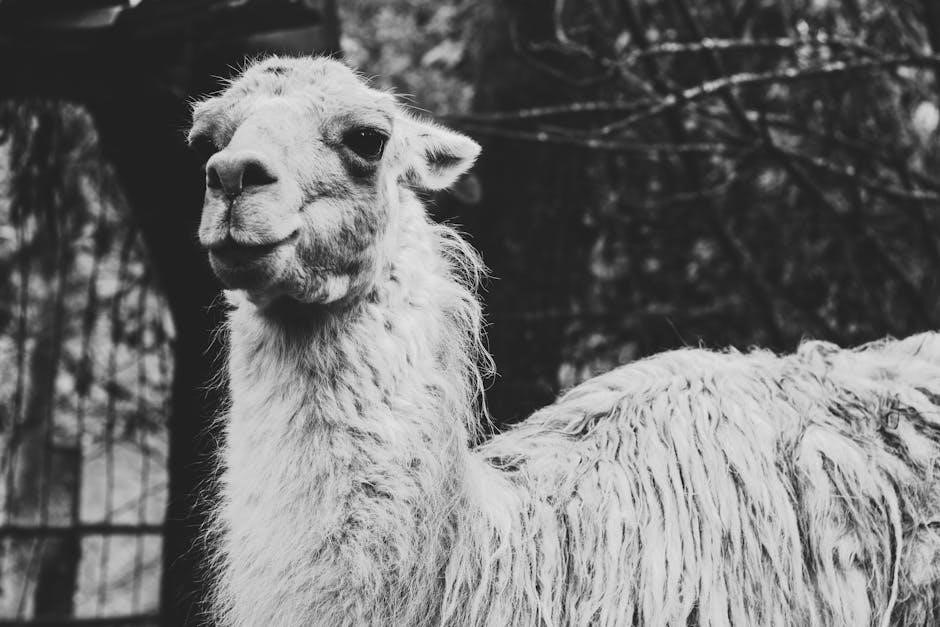
Storage Tips for Alpaca Wool
Store alpaca wool in a cool, dry place, folded in breathable containers like fabric bags. Avoid direct sunlight and moisture to prevent damage and odors, ensuring longevity.
Best Practices for Storing Garments
Store alpaca wool garments in a cool, dry place to maintain their quality. Fold them neatly and place in breathable containers or fabric bags to prevent moisture buildup. Avoid direct sunlight, as it can cause fading or damage. Do not hang garments, as this may stretch the fibers over time. For added protection, store in a drawer or shelf away from humidity. This method ensures the wool remains soft, prevents pilling, and retains its natural texture. Proper storage extends the lifespan of your alpaca wool items, keeping them fresh and ready to wear.
Preventing Moisture and Odors
To prevent moisture buildup and odors, store alpaca wool garments in a well-ventilated, cool, and dry area. Use breathable storage containers or fabric bags to allow airflow. Avoid plastic bags, as they trap humidity. Cedar blocks or lavender sachets can naturally deter pests and freshen the storage space. Alpaca wool’s natural antimicrobial properties resist odors, but proper airflow ensures freshness. If storing for long periods, periodically air out garments to maintain their quality and prevent musty smells. This approach preserves the wool’s softness and prevents damage from moisture exposure.
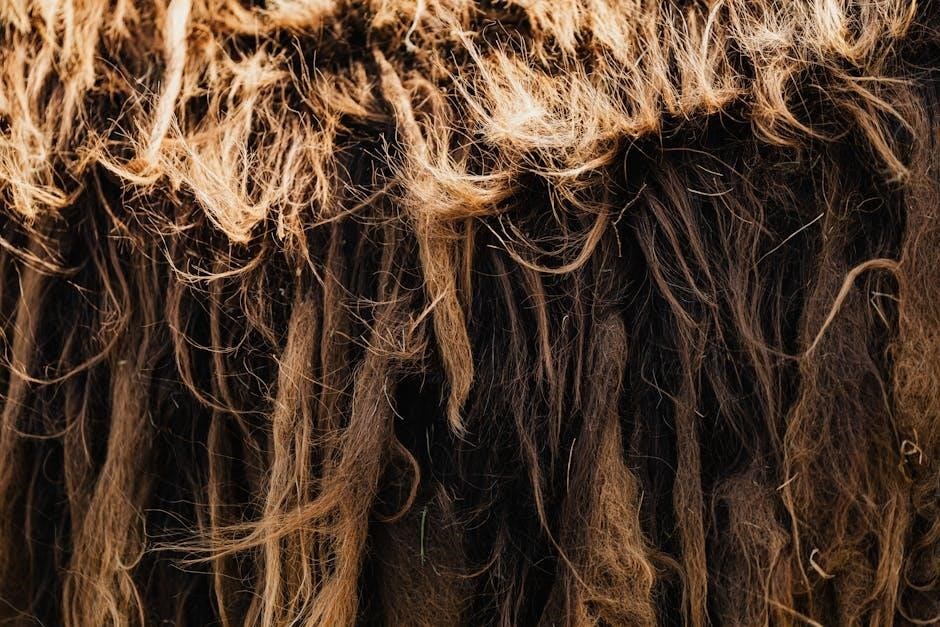
Preventing Pilling on Alpaca Wool
Preventing pilling on alpaca wool involves using high-quality fabrics, gentle washing, and minimizing friction. Regular brushing and avoiding harsh detergents also help maintain the fabric’s integrity and appearance.
Choosing High-Quality Fabrics
Opting for high-quality alpaca wool fabrics is essential to minimize pilling. Look for garments made from long-staple fibers, as they are less prone to pilling compared to shorter fibers. Brands like Paka Apparel emphasize the use of long-staple alpaca fibers to ensure durability and reduce pilling. Additionally, blended fabrics with materials like Tencel can enhance softness and strength. Always choose fabrics from reputable manufacturers that pre-shrink and treat their materials to prevent felting or shrinkage. Investing in quality ensures your alpaca wool garments remain pill-free and maintain their luxurious feel over time.
Washing Inside Out
Turning alpaca wool garments inside out before washing helps reduce friction during the wash cycle, minimizing the risk of pilling or damage to the fibers. This simple step protects the outer surface of the fabric from abrasion caused by the washing machine drum or other clothes. It also helps preserve the softness and texture of the wool. Always ensure the garment is gently placed in a mesh laundry bag for added protection. This method is especially effective for maintaining the appearance and longevity of your alpaca wool items, keeping them pill-free and looking their best.
Using a Fabric Shaver
A fabric shaver is an effective tool for removing pills from alpaca wool garments without causing damage. Gently glide the shaver over the affected areas to eliminate unsightly fuzz. This method helps restore the fabric’s smooth texture and maintain its appearance. Use light pressure to avoid cutting or weakening the fibers. Regular use of a fabric shaver can extend the life of your alpaca wool items, keeping them looking fresh and maintaining their softness. It’s a simple yet essential step in preserving the quality of your cherished garments.
Caring for Dyed Alpaca Wool
Caring for dyed alpaca wool requires gentle attention to preserve color vibrancy. Use cold water and mild detergents to minimize bleeding. Separate dyed items during washing to prevent color transfer, ensuring your garments remain vibrant and intact.
Minimizing Color Bleeding
To minimize color bleeding in dyed alpaca wool, always wash items in cold water using a gentle detergent. Avoid soaking for extended periods, as this can cause colors to bleed. Gently agitate the water and allow the garment to rinse thoroughly. Never wring or twist the fabric, as this can damage fibers and promote color loss. For added protection, wash dyed and undyed items separately to prevent unintended color transfer. This ensures your alpaca wool retains its vibrant hues and soft texture.
Separating Dyed and Undyed Items
Separating dyed and undyed alpaca wool items during washing is crucial to prevent color transfer. Dyed fibers, especially those with vibrant hues, may bleed when exposed to water, potentially staining undyed garments. Use separate bins or laundry bags for dyed and undyed items to avoid unintended color mixing. This practice ensures both types of garments retain their original appearance and softness. Always check care labels for specific instructions, as some dyes may be more prone to bleeding than others. Proper separation maintains the integrity and aesthetics of your alpaca wool collection.
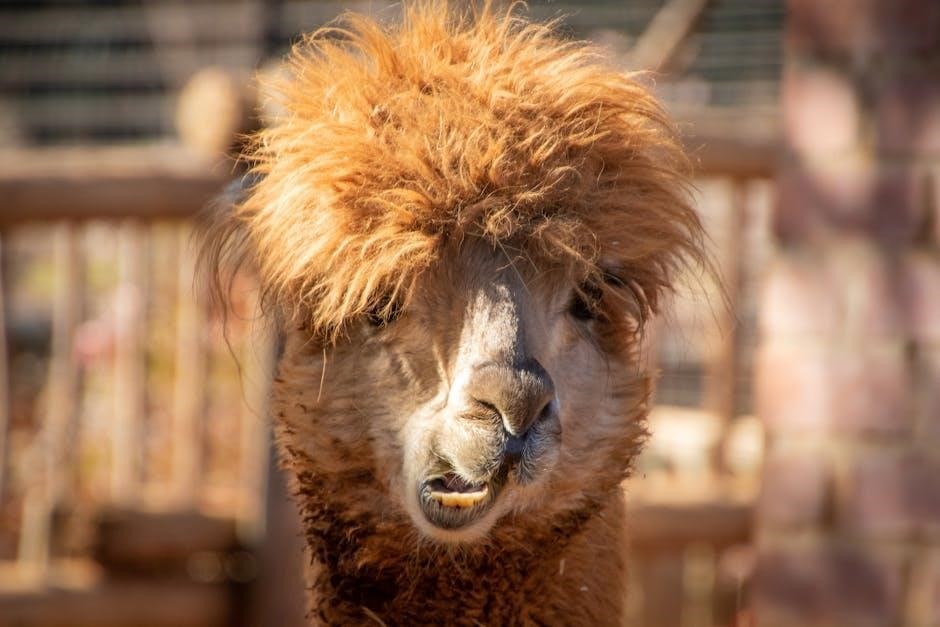
Maintaining Softness of Alpaca Wool
Alpaca wool retains its softness with gentle care. Use mild detergents, avoid fabric softeners, and wash in lukewarm water. Brushing restores the nap, preventing matting and maintaining a luxurious feel. Reshape wet garments and air-dry flat to preserve softness and texture. Proper storage in cool, dry spaces protects against moisture and fading, ensuring long-lasting softness.
Importance of Gentle Washing
Gentle washing is crucial for preserving alpaca wool’s softness and texture. Harsh detergents or vigorous scrubbing can damage the delicate fibers, leading to pilling or felting. Using mild, pH-neutral detergents designed for wool ensures a safe cleaning process. Lukewarm water prevents shrinkage, while avoiding agitation maintains the fibers’ integrity. Gently swishing the garment allows the soap to penetrate without causing friction. This method protects the natural oils in the fibers, keeping the fabric soft and supple. Regular gentle washing extends the lifespan of alpaca wool garments, ensuring they remain luxurious and durable over time.
Brushing to Revive the Nap
Regular brushing is essential to restore the softness and texture of alpaca wool. Use a soft-bristled brush or lint brush to gently sweep the fabric lengthwise, removing surface dirt and smoothing fibers. This process revives the nap, maintaining the garment’s luxurious appearance. For finer fabrics, a damp sponge can be used to gently wipe away impurities. Brushing not only prevents matting but also redistributes natural oils, ensuring the wool remains soft and lustrous. Regular maintenance extends the life of the garment, keeping it looking fresh and vibrant without frequent washing.
Common Mistakes to Avoid
Avoid using hot water, harsh detergents, and direct sunlight when caring for alpaca wool. Over-washing can degrade fibers, while improper drying may cause shrinkage or distortion.
Over-Washing Alpaca Wool
Over-washing alpaca wool can degrade its natural fibers, leading to a loss of softness and elasticity. Alpaca fibers are naturally resilient but delicate, requiring minimal cleaning. Excessive washing strips the wool of its natural oils, causing it to feel rough and brittle over time. Additionally, frequent washing can lead to felting, where fibers mat and lose their smooth texture. To preserve the quality of alpaca wool, it’s best to wash it only when necessary and always use gentle, pH-neutral detergents. Air-drying and brushing can often revive the fabric without the need for frequent washing.
Using Harsh Detergents
Harsh detergents can severely damage alpaca wool by stripping its natural oils and weakening the fibers. These detergents often contain enzymes and chemicals designed to break down proteins, which can irreparably harm the wool’s structure. Always opt for a mild, pH-neutral detergent specifically formulated for washing delicate or woolen items. Avoid using bleach or fabric softeners, as they can cause discoloration and leave residues that dull the fabric. Gentle care ensures alpaca wool retains its softness, durability, and luxurious texture for years to come. Using the right detergent is crucial for maintaining the integrity of alpaca fibers.
Exposing to Direct Sunlight
Direct sunlight can cause alpaca wool to fade and lose its vibrant colors, especially in dyed garments. Prolonged exposure weakens the fibers, leading to a brittle texture and potential breaks. Sunlight can also cause shrinkage and dry out the natural moisture of the wool, reducing its softness. To protect your alpaca wool, store it in a cool, shaded area or use UV-blocking storage bags. Avoid drying alpaca wool in direct sunlight, as it can damage the fibers and alter their natural properties. Proper storage and drying practices are essential to maintain the longevity and quality of alpaca wool garments.
Environmental Impact of Alpaca Wool Care
Caring for alpaca wool sustainably reduces its environmental footprint. Using cold water and gentle detergents minimizes energy and chemical use. Proper washing and storage extend garment life, reducing waste and the need for frequent replacements, making alpaca wool a more eco-friendly choice for conscious consumers.
Sustainability of Alpaca Fiber
Alpaca fiber is renowned for its sustainability. As a renewable and biodegradable resource, it minimizes environmental impact. Alpacas require minimal water and food compared to other livestock, making their farming eco-friendly. The fiber itself is naturally durable, reducing the need for frequent washing. Proper care, such as using cold water and gentle detergents, further conserves resources. Additionally, alpaca wool is free of harmful chemicals, ensuring it doesn’t pollute water systems. Its long lifespan and low maintenance make it a sustainable choice for environmentally conscious consumers.
Reducing Water and Energy Use
Minimizing water and energy use is crucial for sustainable alpaca wool care. Alpaca fibers are naturally antimicrobial and odor-resistant, reducing the need for frequent washing. When washing is necessary, opt for cold water, which consumes less energy than hot cycles. Using gentle, eco-friendly detergents further minimizes environmental impact; Air drying instead of machine drying preserves the fiber while saving energy. These practices not only protect the environment but also extend the lifespan of alpaca wool garments, aligning with sustainable living principles.
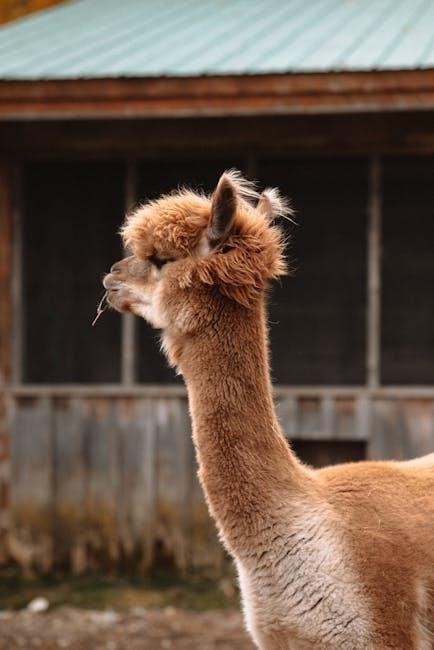
Frequently Asked Questions
Common queries about alpaca wool care include whether it can be dry-cleaned, how often it should be washed, and if it shrinks. These answers guide proper maintenance.
Can Alpaca Wool Be Dry Cleaned?
Dry cleaning is generally not recommended for alpaca wool as harsh chemicals can damage its delicate fibers. Hand washing with mild detergents is the safest method. If dry cleaning is necessary, ensure the cleaner specializes in natural fibers like wool or cashmere. Always check the care label for specific instructions, as some dyed or blended items might require professional care. Avoid frequent dry cleaning to preserve the softness and integrity of the fabric. For most cases, gentle hand washing is the preferred and most reliable option.
How Often Should Alpaca Wool Be Washed?
Alpaca wool garments should be washed sparingly due to their natural antimicrobial and odor-resistant properties. They can often be refreshed by airing them out rather than washing. Wash after significant use or when visibly soiled. Over-washing can degrade the fibers, making them rough and prone to pilling. For items like baselayers, washing every 3-5 wears is sufficient. For outerwear, washing once or twice a season is usually enough. Always follow care labels and opt for gentle hand washing to maintain softness and longevity.
Will Alpaca Wool Shrink?
Alpaca wool can shrink if not cared for properly. Hot water, agitation, and improper drying are primary causes. The degree of shrinkage depends on the fiber type, fabric blend, and quality. To prevent shrinkage, wash in cold water using a gentle detergent, avoid machine agitation, and reshape garments while damp. Air drying flat is crucial, as hanging wet items can stretch or deform them. Following care instructions and using recommended washing methods helps maintain the original size and texture of your alpaca wool items.
Proper care ensures alpaca wool remains soft and durable. Follow washing, drying, and storage tips to maintain its quality and extend its lifespan for years of enjoyment.
Final Tips for Longevity
Alpaca wool thrives with gentle care. Store garments in a cool, dry place, folded and in breathable containers. Avoid direct sunlight and moisture to prevent damage. Regular brushing revives the nap, maintaining softness. For stains, act quickly with mild solutions, blotting gently to avoid deepening. Hand washing is ideal, using lukewarm water and wool-safe detergents. Air drying flat is crucial to preserve shape and texture. By following these practices, your alpaca wool will remain luxurious and durable for years, offering both comfort and timeless style.